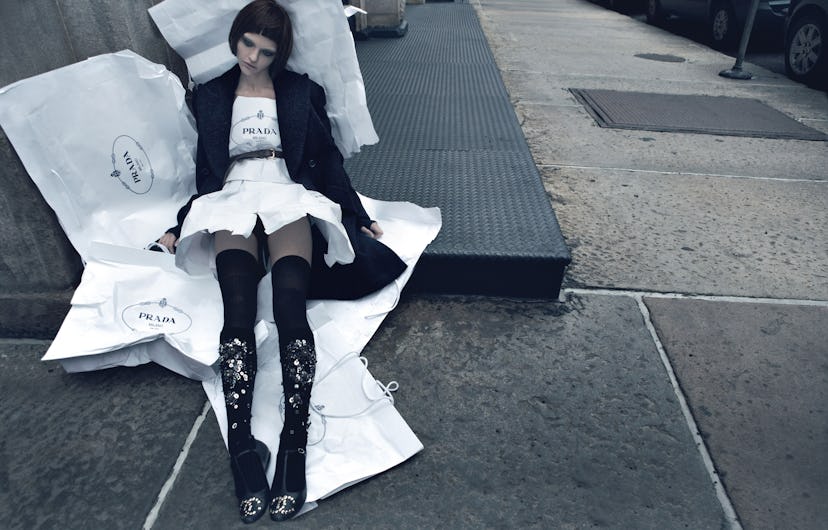Survey Says: Everyone Hates Waiting to Wear Newly Purchased Clothes

85.6 percent.
That’s the number that explains why the current fashion calendar system is so broken. 85.6 percent of shoppers say they strongly prefer to buy clothes that they can wear almost instantly (not necessarily directly out of the store, but, more like that night or the next day). It’s not even a matter so much of “See now, buy now.” It’s one of “Buy now, wear now.”
The numbers come from a survey of consumers carried out by Retail Verdict over the summer. There’s a strong preference for buying clothes that are appropriate for the current weather. In addition, 51.4 percent of shoppers say they don’t like to buy clothing too far in advanced.
This is a problem, considering clothing retailers from Chanel to Walmart operate on a system that puts clothing in front of consumers months before it’s even practical to wear it.
Traditionally, fall clothes start making an appearance in stores in the middle of July, but who wants to try on a coat when they’re still recovering from the involuntary sweat bath they just took outside thanks to the humidity? Likewise, spring and summer clothes start hitting stores in the middle of January. No one really wants to think too much about buying crop tops when they’re only two weeks into their New Year’s resolution-mandated new workout regime.
Most stores right now are stocking lights sweaters and sturdy pants, even the first wave of coats and parkas. Meanwhile, items like shorts and swimsuits are dominating the sales racks (no wonder consumers are so used to sales).
Kim Kardashian shopping at Lanvin in 2009.
Besides, who wants to buy clothes they have to wait months to show off on Instagram? No, really, who? The Retail Verdict also seems to think that social media is partially to blame.
“Social media has shortened fashion cycles, and created a see now, buy now, wear now mentality while generating constant desire for new products,” says their research.
So, “Ugh, That’s so last season,” may be one of the enduring cliché fashion insults, but the industry’s real problem is that it’s actually a little too next season. The irony.
Back in the day the system used to make sense. Shoppers might save up and refresh their wardrobe all-at-once and often months in advance, but in the days of e-commerce, blink-and-you’ll-miss-it microtrends and fast fashion, people have lost that patience.
And that’s why so many fashion houses are bucking the system. Burberry’s much hyped game-changing show slated for September isn’t just notable for employing the “see now, buy now” model. Nor is it for blurring the gender lines. It’s also blurring the season lines as well. The clothes will be seasonles, meant to be worn year-round (ideally in a temperature-controlled indoor climate).
Other brands are experimenting with their own takes on innovation. Misha Nonoo announced this week that she’ll hold her next fashion show directly on Snapchat, and that the clothes will then be only available on the brand’s own website. Vivienne Westwood will try to shorten the time between its shows and when clothes actually hit stores. Other brands like trendy sunglass purveyors Illesteva are experimenting with debuting and then selling styles exclusively on Instagram.
That’s all very innovative, but it seems, at least according to this research, the most important factor to consumers isn’t necessarily when the show is, or how it’s presented, but rather that clothes actually end up in stores at the times they’d actually wear them.
Watch W’s most popular videos here: